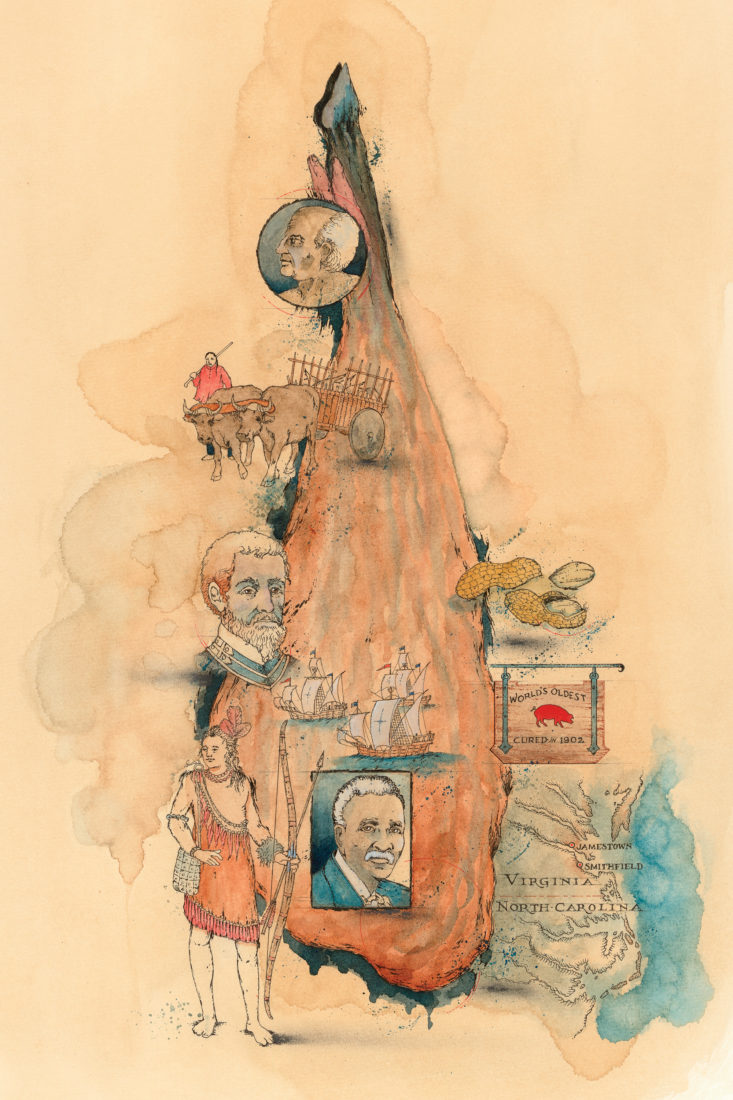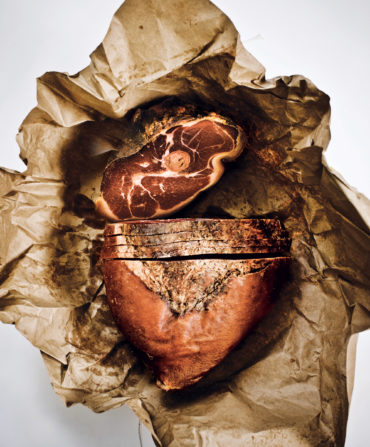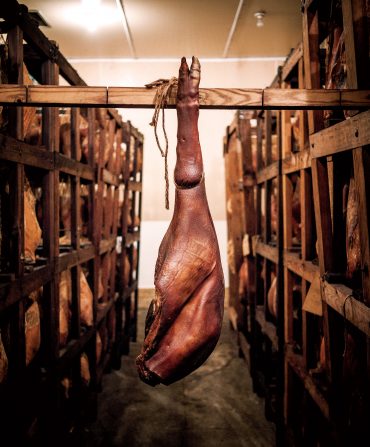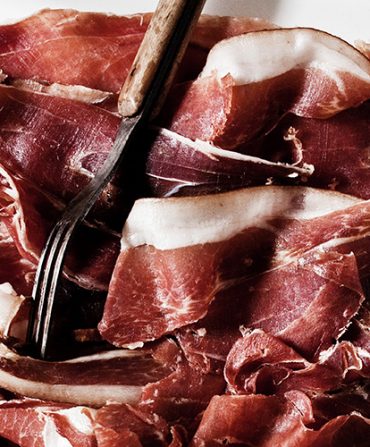160 BC
Roman Marcus Porcius Cato “the Elder” explains how to cure hams in his farming how-to, De Agri Cultura, establishing a foundation for the dry-cured hams of Europe, such as Spain’s jamón ibérico, Italy’s prosciutto di Parma, and France’s jambon de Bayonne.
Circa AD 1100
General Zong Ze is credited with popularizing dry-cured ham in what is now China. Jinhua, near his hometown, becomes the epicenter of an Eastern ham tradition.
1539
Spanish explorer Hernando de Soto arrives in Florida with thirteen Ibérico pigs—the first swine to put down hooves in the South.
1607
English colonists—and their pigs—settle in Jamestown, Virginia, and combine Native American and European techniques to preserve hams. Jamestown’s latitude places it in the middle of what will come to be known as the Ham Belt, a strip of climate zones including Western Europe and southeastern China conducive to preserving meat. Any hotter, the hams would rot. Any colder, they’d freeze.
1728
In his Histories of the Dividing Line betwixt Virginia and North Carolina, Virginian William Byrd II writes that North Carolinians eat so much pork that
it “makes them likewise extremely hoggish in their Temper, & many of them seem to Grunt rather than Speak in their ordinary conversation.”
1802
Farmer and engineer Thomas Moore, Jr., patents the refrigerator in Brookeville, Maryland, laying the groundwork for brine-cured “city” hams to surpass shelf-stable country hams in the years to come.
1912
George Washington Carver collects time-tested methods for curing hams in the Tuskegee Institute’s Bulletin No. 24 and shares the famed Kentucky politician Henry Clay’s family ham cure: “For every ten hams of moderate size take 3½ lbs. of salt, 1 lb. of saltpeter, and 2 lbs. brown sugar. Mix thoroughly and rub the hams therewith on every side. Then pack in a tight box or barrel.”
1926
Smithfield ham begins its rise to porky prominence when Virginia’s General Assembly defines the state’s Smithfield hams as “cut from the carcasses of peanut-fed hogs, raised in the peanut-belt of the State of Virginia or the State of North Carolina.”
1929
Smithfield, Virginia, ham man P. D. Gwaltney insures his twenty-seven-year-old “pet ham” for $1,000. “Despite the wrinkles written upon it by the years,” a newspaper reports, “the owner says he is confident the meat has lost none of its good flavor.” Now the world’s oldest country ham at 115, it’s currently on display at the Isle of Wight County Museum.
1985
At the first annual Smithfield, North Carolina, Ham & Yam Festival, local cure masters go ham-to-ham with tradition-
alists from Smithfield, Virginia. After a series of taste tests, North Carolina emerges triumphant. Virginia producers blame home field advantage but decline to return to the table after they lose by a hair in 1986.
1999
To keep a centuries-old tradition alive, the Kentucky Country Ham Curers Association and 4-H launch the Kentucky 4-H Country Ham Project. More than eight hundred students now learn to make country hams through the program.
2004
New York City chef Tom Colicchio visits Blackberry Farm in Walland, Tennessee, where he discovers Benton’s Smoky Mountain Country Hams, in nearby Madisonville. Colicchio brings some product back to New York, where it catches the attention of chef David Chang, who puts the ham on the menu at his trendsetting Momofuku. Benton’s mania takes hold.
2014
At the Kentucky Country Ham Breakfast and Auction fund-raiser, Hermitage Farms and Republic Bank team up to buy the Kentucky State Fair Grand Champion Ham for a record-breaking $2 million—at nearly sixteen pounds, about $126,000 per pound.








